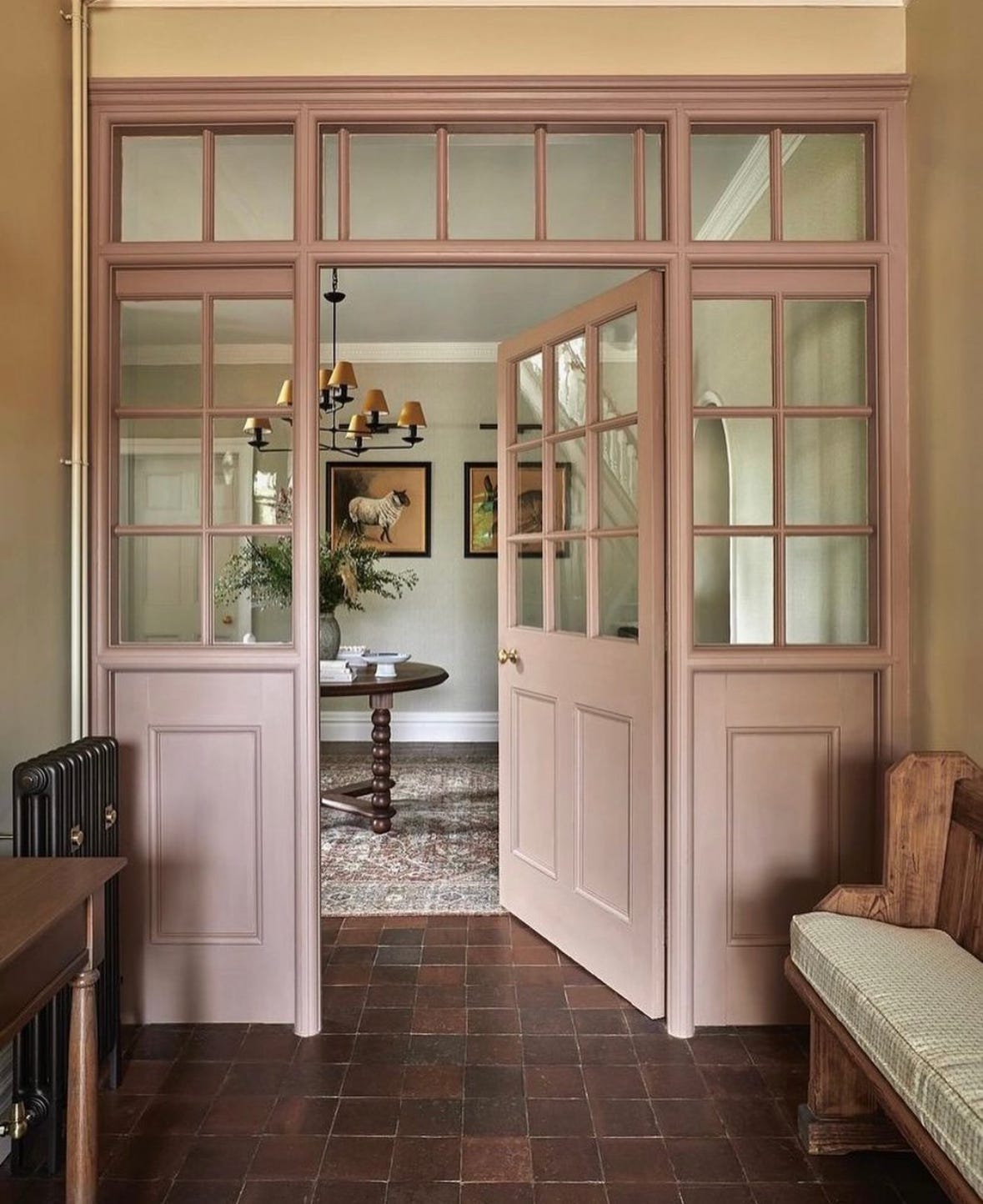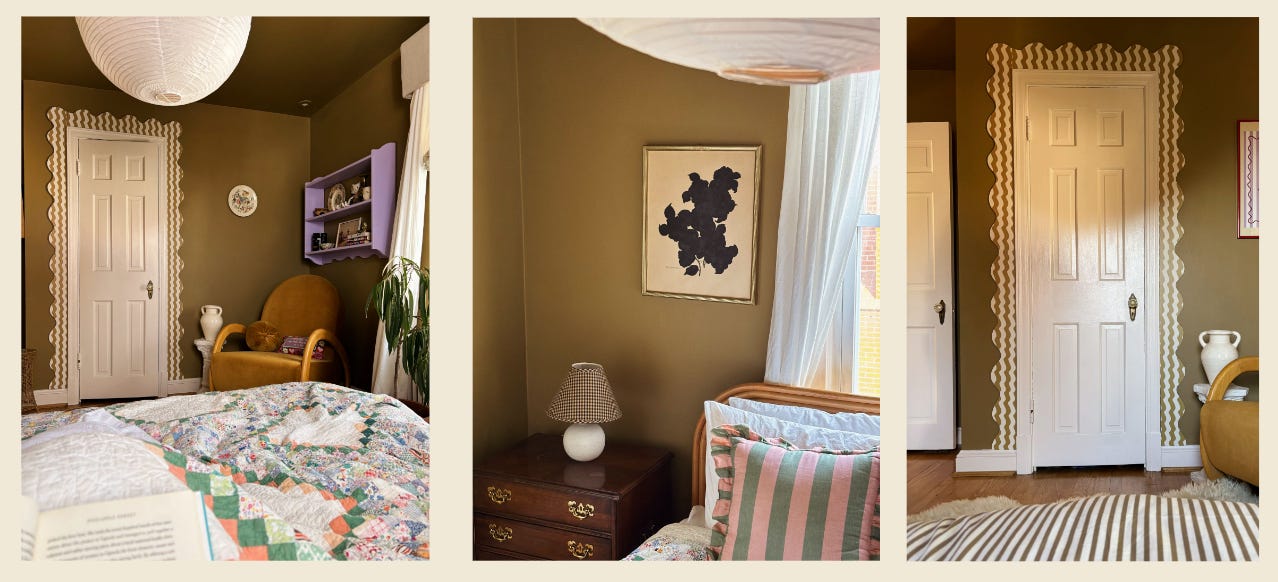Recently we found ourselves reminiscing about the days of analog inspiration. Remember having folders of clippings from magazines? Meeting up with friends at Barnes and Nobles to pore over design books? Now we wake up every morning and scroll through multi-million-dollar home after multi-million-dollar home on instagram. Who knew imagery could be so exhausting?
Social media may not be going anywhere anytime soon, but we can sharpen our ability to use aspirational imagery as a tool to hone our eye and create beauty in more centered ways. We’ll be digging into how we think about this by answering some excellent member questions:
How do you distill all the inspiration from magazines, Instagram, and Pinterest into something workable?
I have a catch-all board on my Pinterest where I save every interior image I love no matter how aspirational. It satisfies my inner hoarder and is the most fabulous (to me) place to scroll when I want to reference design ideas for myself or clients. I of course see things that spark creativity in me, but I tend to work backwards from real life, like ‘I want to paint this room a warm green, and the room next to it is mauve, let me find some examples of homes where this is successfully executed.’ I sort images that align with the vision in my head into mood boards (talked about this more in depth in this months wksp linked below for members) I’m methodical about buying something new, or thinking through a cohesive base concept in the short term so that I can be experimental and playful with vintage finds and artistic touches long term. -Linny
I use a similar but less rigorous process than Linny with Pinterest to moodboards - scrolling Pinterest makes me feel more productive than the Instagram spiral. I use moodboards to gut check purchases, play with ideas and try to convey my vision to my husband. Lately, I have been turning back to books and surprising myself with more detailed things to hone in on and re-interpret. I find that sometimes studying a seemingly more dated interior or a more traditional approach can spark ideas that feel fresh and fun. I am also constantly running ideas by Linny (and other house friends), which is one reason we started this club - having people to hash out ideas with can help clarify goals and vision. -Claire
How do you differentiate between things you think are beautiful and things that you actually want to or should implement in your own home?
Of course, there’s absolutely nothing wrong with just buying what you love and letting that be your vibe! If you want your design to feel very cohesive, then I work backwards from reality. What style is my home? Do I want to lean into that or contrast it? What are the pieces I have that I want to incorporate? How do I want each room to feel? How do we use it, what do we need from it? How does it relate to the home as a whole? What is already working that I can base some decisions around? What’s my budget? What are some realistic goals with my current schedule? The constraints help to eliminate the endless options and then I think as you make one grounded decision, the house starts to take on an identity, so it’s less ambiguous. The beginning is the hardest part. -Linny
Spend some time being thoughtful about images, imagine looking at images on your phone or computer the way you would a book or magazine. Ask yourself what elements are speaking to you, what are the common threads. How can I distill the image into words (we practiced this exercise in our most recent workshop, which is linked below for members) -Claire
How do you move from inspiration and mood board into implementation?
Here are some mood boards → rooms in our houses, Claire’s inspo and how it translated to her home in Charlotte, NC and Linny’s inspiration → her guest room/office.

I put this moodboard together after most of these rooms came together in preparation for my recent move; however, I had been referencing many of these images for awhile. For me, the connecting dots were bold color, playful patterns, and a mix of vintage and new. I focused on finding second-hand furniture and layering in new curtains, rugs, and art to bring more modern touches. In this house, I experimented a lot more with paint than I ever have before and painted all the walls, almost all the trim and a few ceilings. When we moved in, I had come from several back-to-back moves and was really craving the ability to dig in and have fun with color, and I think it really shows. It is a very small house -1,000 sq ft with three bedrooms that you can see into from the only hallway, so I used the existing wallpaper in the bathroom to build a cohesive palette around. - Claire
I wanted this room to feel cozy and fun. I chose this gold color and found some images that helped me envision playful accent colors to help push me out of my comfort zone. The chair, the rice paper light and the bed were meant specifically for this room, everything else is just stuff I had that I’ve pulled in, or gotten creative with. It’s not “finished” but it has such a lovely feel to it that I ended up moving my office in. -Linny
What are the next concrete steps? I always struggle with sourcing and feeling overwhelmed with how much stuff is out in the world, or finding something that actually reflects the inspiration
Prioritize needs vs. wants - what do you need to make the space feel functional and good. Then, create a list of items you want to take the time to hunt for and layer in…this is part of that slow progress approach we preach.
Distill your photos into words so you can then disassociate the exact designs you are inspired by and search for items you love within your means.
Establish a cohesive color palette - studying full house tours can help you get a sense of how to create a home that flows nicely. Whether you’re a color lover or want to keep things calm, a color palette is a huge piece of the puzzle.
Use the architecture of your home or lack thereof as a jumping off point. New build? Bring in lots of rugs and vintage furniture to balance the feel, or embrace the modern with simple intentional art. Any direction can work if you’re intentional.
Use a family heirloom/beloved textile/wall covering - something that feels timeless for you as a starting point. Maybe you build your color palette off of an existing wallpaper like Claire talked about.
Lean into nostalgia so that your decisions feel timeless. What feels classic to you? Are there memories from a childhood home, a vacation, restaurant feel, etc. that you could build off of?
Start with what you have and make swaps over time. Try to get the bones right and then play! Upgrade pieces as you learn more about your style, rearrange furniture and try new ideas.
We chatted more about translating inspiration in our latest (14th!!) virtual workshop. All are available to our paid subscribers, linked below:









